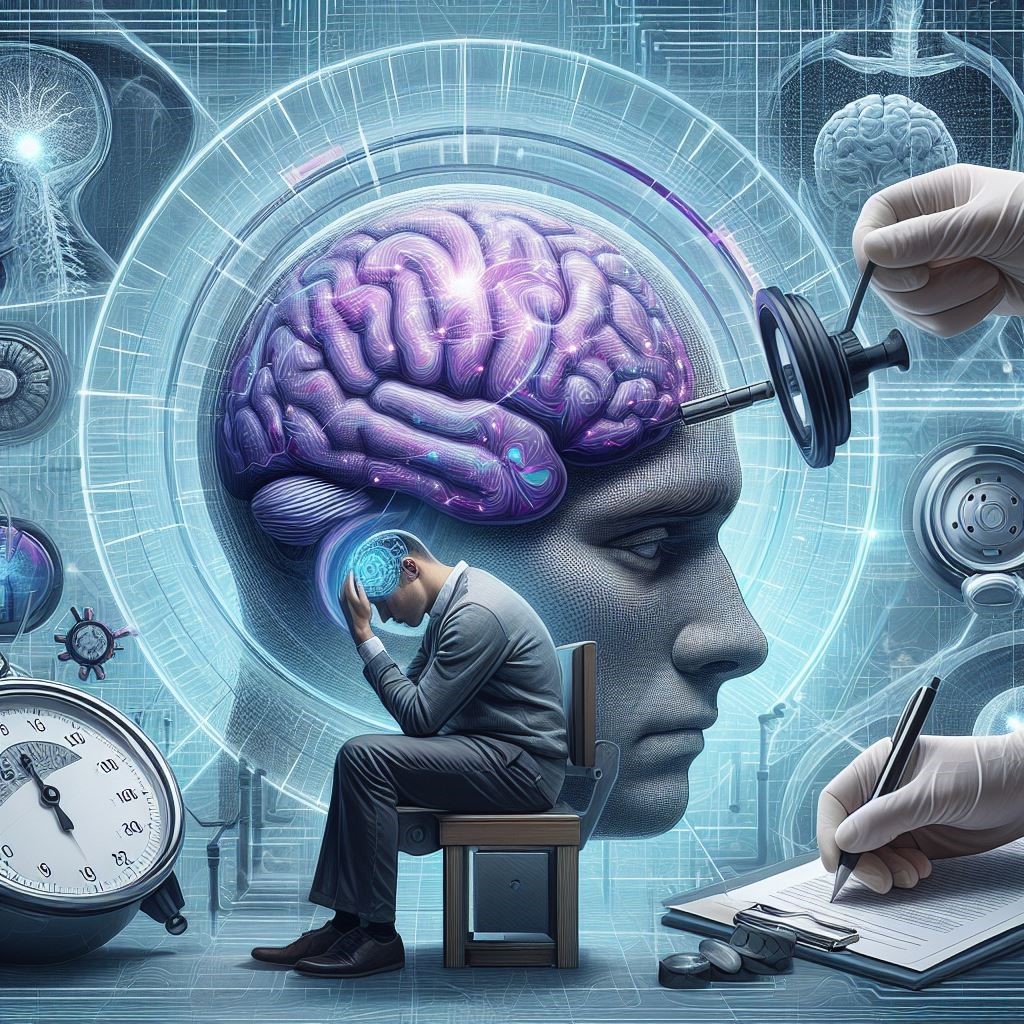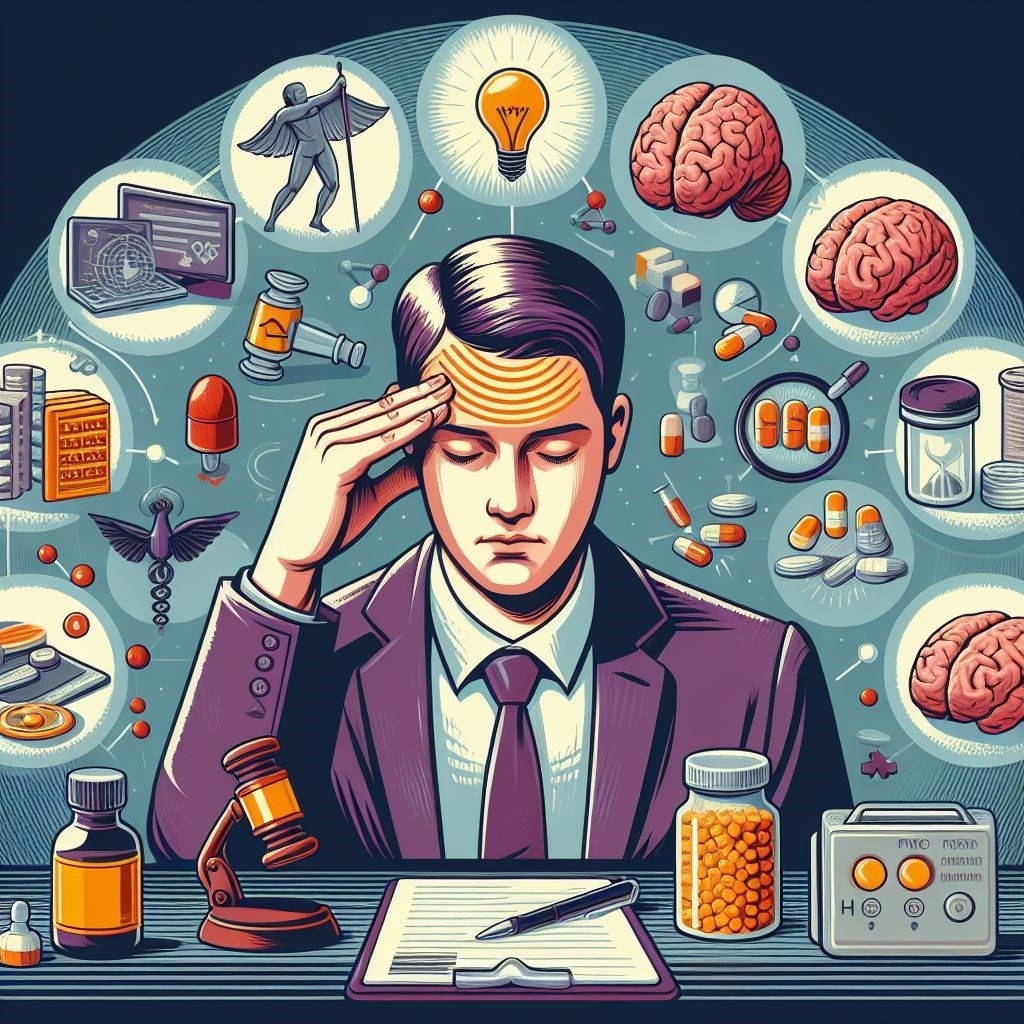Living with Hemiplegic Migraine: The Power of Self-Care
Explore the transformative journey of living with hemiplegic migraine. Discover the profound impact of self-care in reclaiming control and finding solace.
Key Takeaways about Living with Hemiplegic Migraine

- Hemiplegic migraine is a rare and severe type of migraine causing temporary paralysis or weakness on one side of the body.
- Getting diagnosed properly by a neurologist is crucial for effective treatment and self-care.
- Preventative medications, healthy lifestyle habits, avoiding triggers, and managing stress can help mitigate hemiplegic migraine symptoms.
- Be prepared with an emergency migraine kit and action plan for when attacks strike.
- Support groups and online communities provide validation and resources for coping with this challenging condition.
Understanding Living with Hemiplegic Migraine
Living with hemiplegic migraine means periodically coping with severe headache flares featuring temporary motor weakness or paralysis along one side of your body. It’s considered an uncommon migraine subtype affecting about 1 in 10,000 people.
Some core aspects of managing life with hemiplegic migraine include:
- Getting an accurate diagnosis can take years, given the rarity. Seeing a headache specialist helps.
- Preventative medications aim to decrease attack frequency and severity. Having abortive rescue treatment available halts attacks.
- Lifestyle measures like staying hydrated, reducing stressors, and noting symptom triggers further aid stability.
- Preparing for breakthrough flares with emergency kits and support networks makes coping easier.
Below, we’ll break down key strategies for stability in living with this migraine variant.
Achieving an Accurate Hemiplegic Migraine Diagnosis

Getting properly diagnosed with hemiplegic migraine is essential but can prove challenging. Primary doctors often fail to recognize it initially because of its rarity. You may go through years of incorrect diagnoses and unhelpful medications before finally seeing a neurologist familiar with the disorder. “It took me five years and six different neurologists to get a definitive diagnosis for my recurrent paralysis episodes,” recounts Lisa J., living with hemiplegic migraine.
Specialized neurologists rely on your clinical history and rule out other potential causes to diagnose hemiplegic migraine. There are no blood tests available. Tracking down details on your family history can also provide helpful clues since experts suspect genetics plays a role.
Key Diagnostic Criteria |
| Repeated migraine aura symptoms causing motor weakness similar to one-sided stroke symptoms |
| Transient speech problems are possible along with other aura features |
| Headaches follow the temporary paralysis or weakness |
| Family members diagnosed with migraine or episodic neurological issues |
| Symptoms not better explained by another disorder |
Early recognition that you fit the diagnostic criteria for hemiplegic migraine gives you the power to research proper management approaches rather than suffering silently.
Implementing Preventative Hemiplegic Migraine Treatments

Once diagnosed, most doctors outline a two-tier treatment plan targeting prevention and acute attacks for balancing life with hemiplegic migraine.
Preventative daily medications aim to decrease the frequency and severity of hemiplegic migraine attacks. Having abortive rescue medications on hand provides a way to halt full-blown attacks.
Preventative Medication Options
Several prescription medications used for seizure disorders and blood pressure regulation show efficacy in preventing hemiplegic migraine attacks. Options like anticonvulsants Topamax or Depakote reduce frequency for some patients.
No medications are FDA-approved specifically for hemiplegic migraine prevention. However, experts often prescribe certain anticonvulsants or blood pressure drugs off label to reduce attack risk. Common options include:
- Topiramate (Topamax)
- Sodium valproate (Depakote/Epilim)
- Propranolol (Inderal)
- Verapamil (Calan/Isoptin)
While these conventional preventatives provide relief for some, their side effects frequently cause intolerable drowsiness, nausea, or cognitive slowness. Newer emerging treatments like monoclonal antibodies aim to prevent migraine with more favourable safety profiles. Talk to your doctor about access to clinical trials or compassionate use if standard preventatives remain ineffective or difficult to tolerate.
Adopting Healthy Lifestyle Strategies
Complementary to medications, adopting some positive lifestyle changes empowers you to reduce your susceptibility to hemiplegic migraine flares:
- Get enough sleep. Work towards a regular bedtime and aim for 7-9 hours nightly.
- Exercise regularly. Low-affected cardio that elevates your heart rate has migraine prevention benefits.
- Reduce stress when possible. Practice relaxation techniques like deep breathing, yoga, or mindfulness meditation. Consider online mental health counselling.
- Limit caffeine intake. Consuming moderate amounts daily instead of fluctuating your intake works better for some people.
- Stay hydrated. Drink at least 64 oz water daily. Getting dehydrated can trigger attacks.
While no definitive clinical research confirms which diets or supplements help hemiplegic migraine specifically, an overall focus on nutrition provides energy for coping day-to-day. If you suspect certain food triggers provoke your flares, keep a diary documenting meals before attacks strike, then try eliminating those items.
Creating an Emergency Action Plan for Attacks
Despite rigorous prevention methods, breakthrough flares still punctuate living with hemiplegic migraine. Making a crisis response plan reduces chaos when attacks periodically sideline you.
Have Abortive Medications on Hand
If aura or warning symptoms of an impending hemiplegic migraine attack hit, having abortive medications readily available to take offers the best chance of dodging full paralysis and pain. Typical oral tablets work poorly because of slow absorption before the aura escalates to weakness. That’s why having self-injectables or nasal sprays works better for many people.
Commonly prescribed abortive options include:
- Sumatriptan injection, nasal spray, or dissolving tablet
- Zolmitriptan nasal spray (Zomig)
- Rizatriptan dissolving tablet (Maxalt-MLT)
Packing a “migraine attack toolkit” containing your go-to abortive gives you quick access no matter where you are. Also include any anti-nausea tablets to take alongside your acute meds if needed.
Keeping emergency medication and non-drowsy anti-nausea tablets in your kit facilitates addressing attacks anywhere when living with hemiplegic migraine.
Know When to Utilize Emergency Services
While home-based abortive meds provide the first line of defence, know your limits. If sensory distortions or confusion precede unilateral weakness signalling a flare, you have only a brief window to intervene before speech difficulties or paralysis inhibit taking oral meds. In cases of:
- Worsening mobility on one side of your body
- Inability to communicate clearly.
- Significantly altered consciousness.
Don’t delay seeking emergency care. Call 911 or have someone drive you to the ER immediately. Many people with hemiplegic migraine keep written guidance with them explaining crucial history details and recommended acute treatments for providers.
Finding Social Support from Others with Hemiplegic Migraine
Coping with the loneliness and unpredictability of living with hemiplegic migraine poses ongoing mental health challenges for patients and loved ones. Connecting with others going through the same ordeal for mutual understanding and tips offers comfort.
In-person support groups provide venues for venting and learning regional management resources. But rarity and disabling mobility barriers during flares limit accessibility for many. That’s why online communities fill the gap – offering 24/7 forums for members across geographic regions. Leading examples include:
- Hemiplegic Migraine Foundation Facebook Group
- Migraine.com Hemiplegic Forum
- Migraine.com Hemiplegic Forum
Turning to others living with hemiplegic migraine for empathy and guidance cultivates resilience. Their journey inspires hope that science keeps moving towards better solutions while you implement every available self-care tool for stability now.
Here is the concluding paragraph with the requested phrase “living with hemiplegic migraine” inserted:
Conclusion about living with Hemiplegic Migraine
While scary and unpredictable adopting a lifestyle focused on prevention, emergency preparedness, and community support puts you in the best position for minimizing **living with hemiplegic migraines** disruption to everything that matters. The path to navigate life with this condition holds both setbacks and successes. But the power to mould your journey lies within your grasp.
FAQs about Living with Hemiplegic Migraine
Here are the common frequently asked questions about living with Hemiplegic Migraine and the best answers for them.
How do you stop a hemiplegic migraine?
The best way is to catch it early. Having emergency medication like sumatriptan injection or nasal spray on hand can sometimes stop an attack if you take it as soon as you notice aura symptoms starting. Getting rest in a muted, dark room right away helps too. If you can’t get the migraine under control fairly quickly at home, you’ll need to get medical treatment fast at the ER, where they can give strong medication.
What is a hemiplegic migraine lifestyle?
It’s all about prevention and being prepared. Stick to regular sleep, eating and exercise routines as much as possible to keep symptoms stable. Identify and avoid potential triggers like stress, specific foods, hormones, etc. Have an emergency kit with your acute meds and medical info ready to grab. Let people close to you know how to help if an attack happens unexpectedly.
What happens to your brain when you have a hemiplegic migraine?
Research shows increased excitability and abnormal signalling cascades happen in the brain during an attack. Many experts think the migraine originates deep in the brainstem, which disrupts nerve communication pathways to the spinal cord. That’s why people temporarily lose control of movement on one side.
How long can hemiplegic migraine last?
The paralysis, weakness, and pain vary, but hemiplegic migraine attacks typically last anywhere from several hours to a few days. Symptoms like confusion can come and go in waves over that time. The recovery phase tends to take longer, too, compared to a regular migraine attack. So expect to feel drained, both physically and mentally, for many days afterward.



